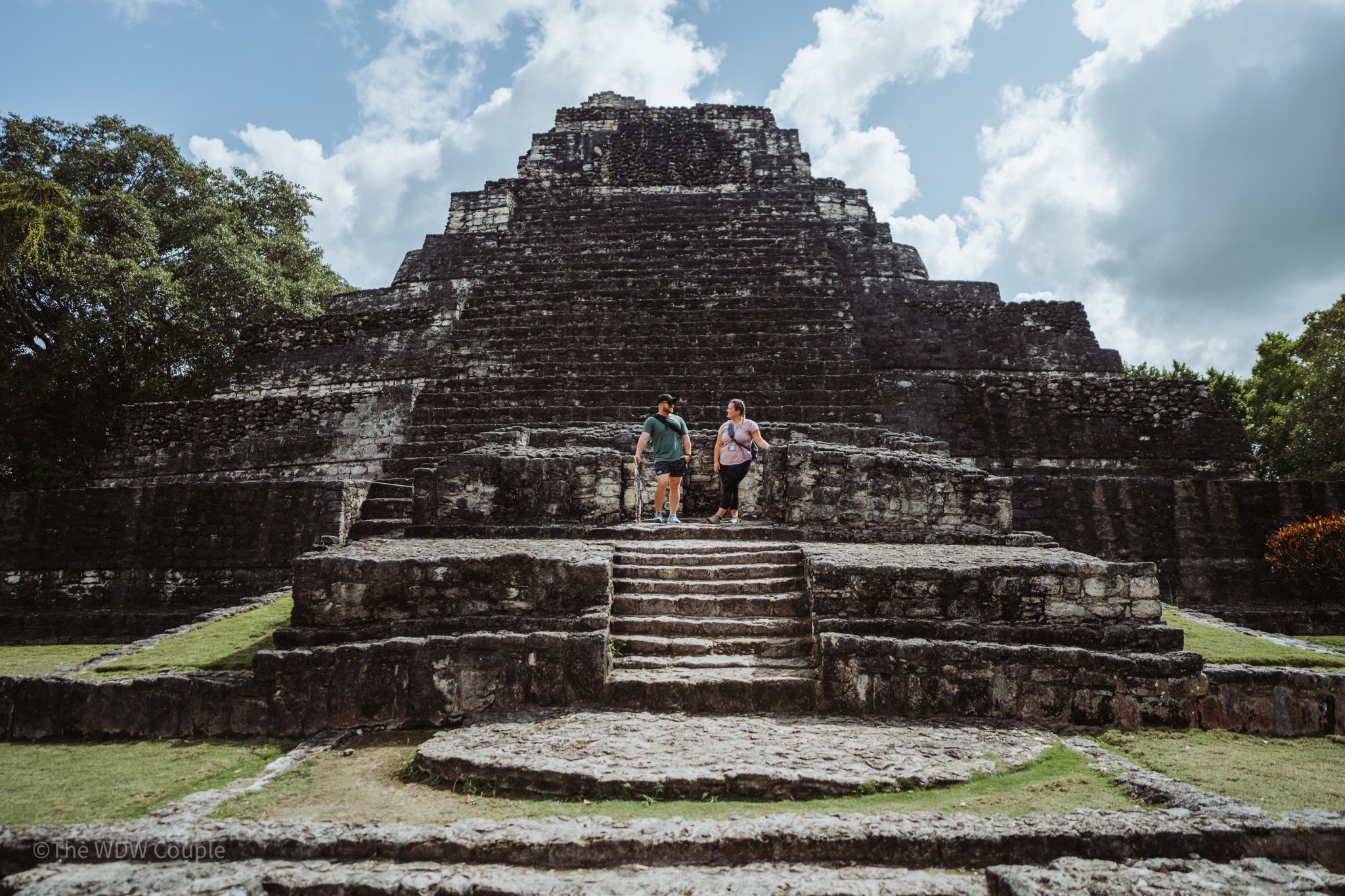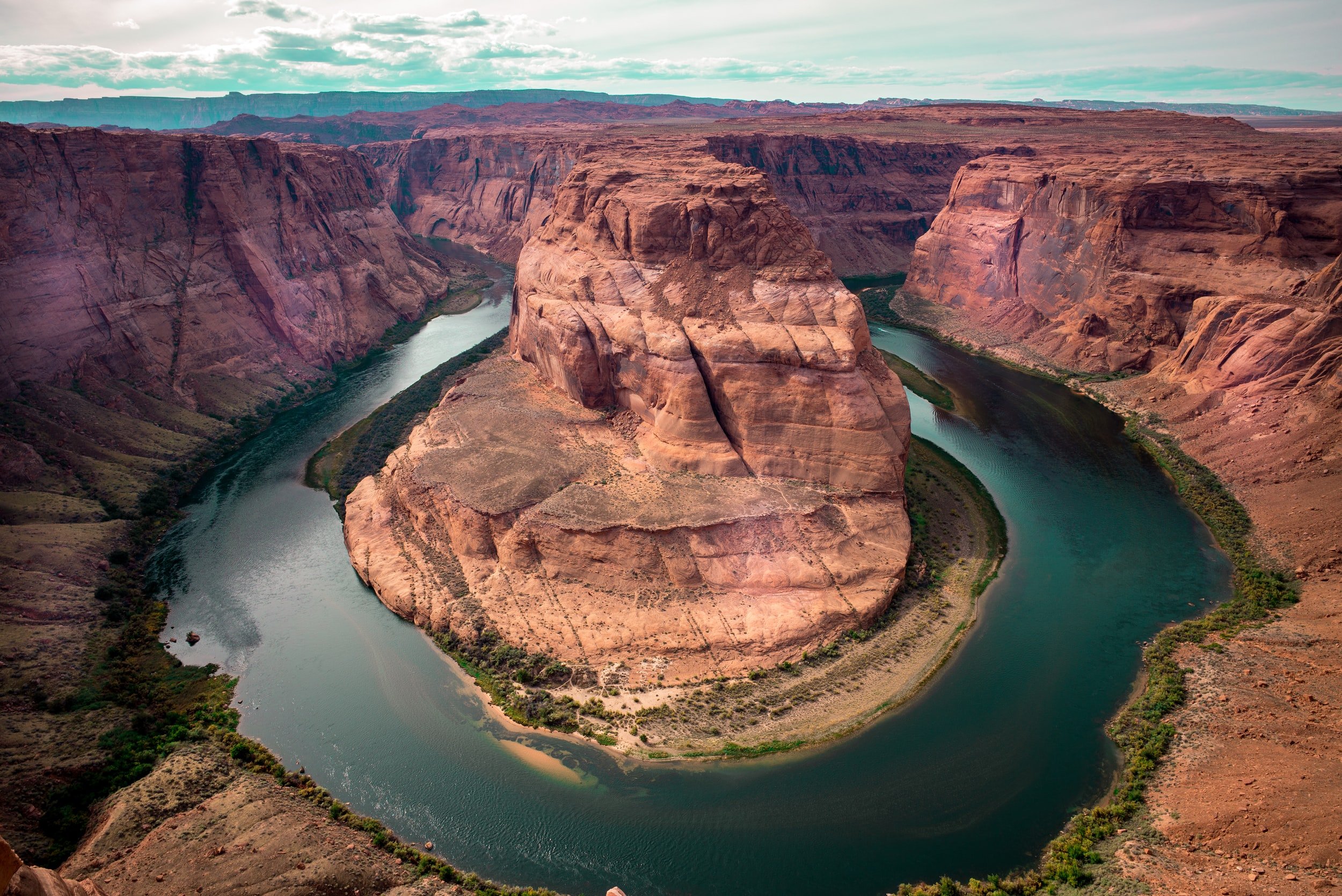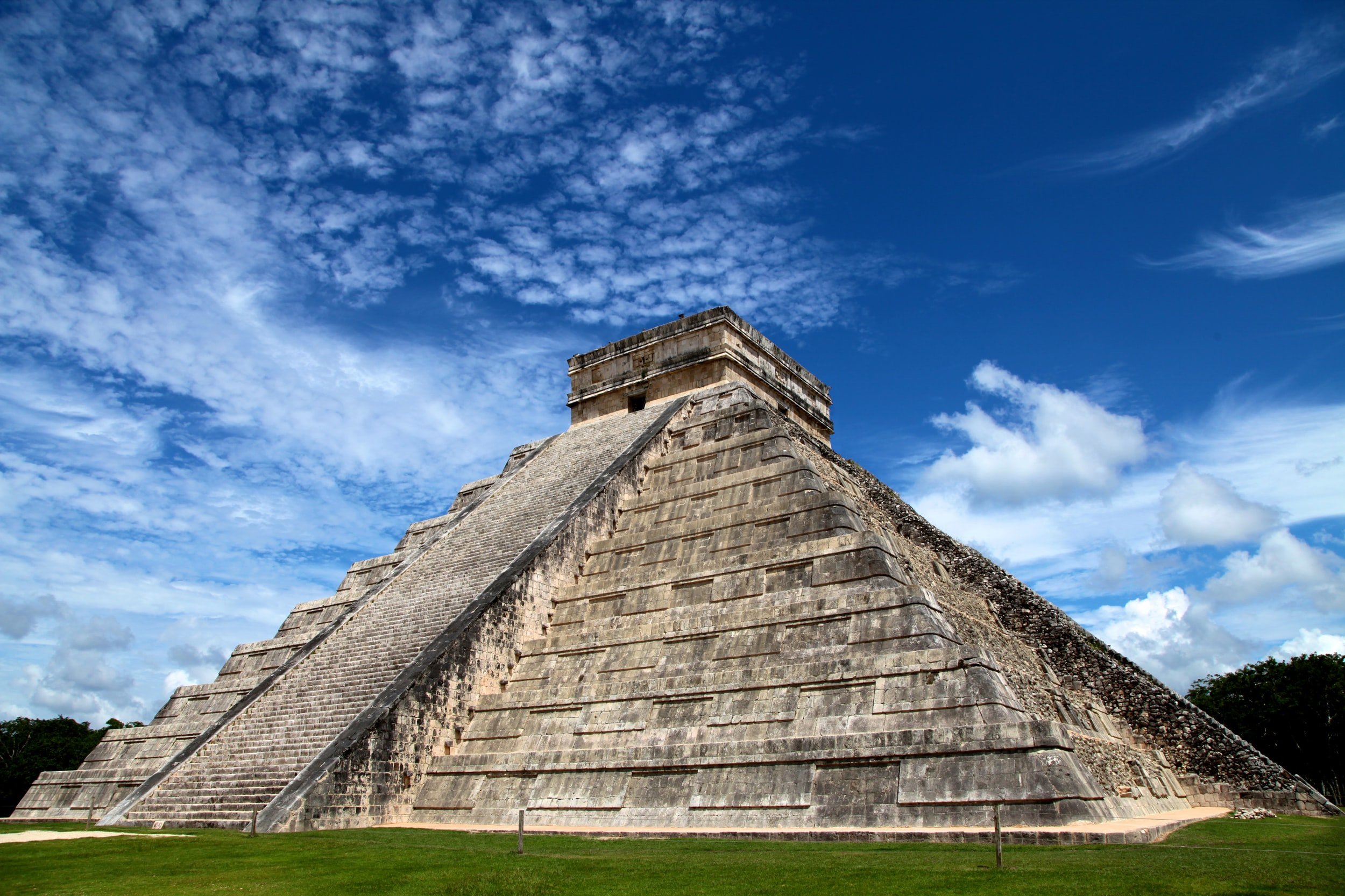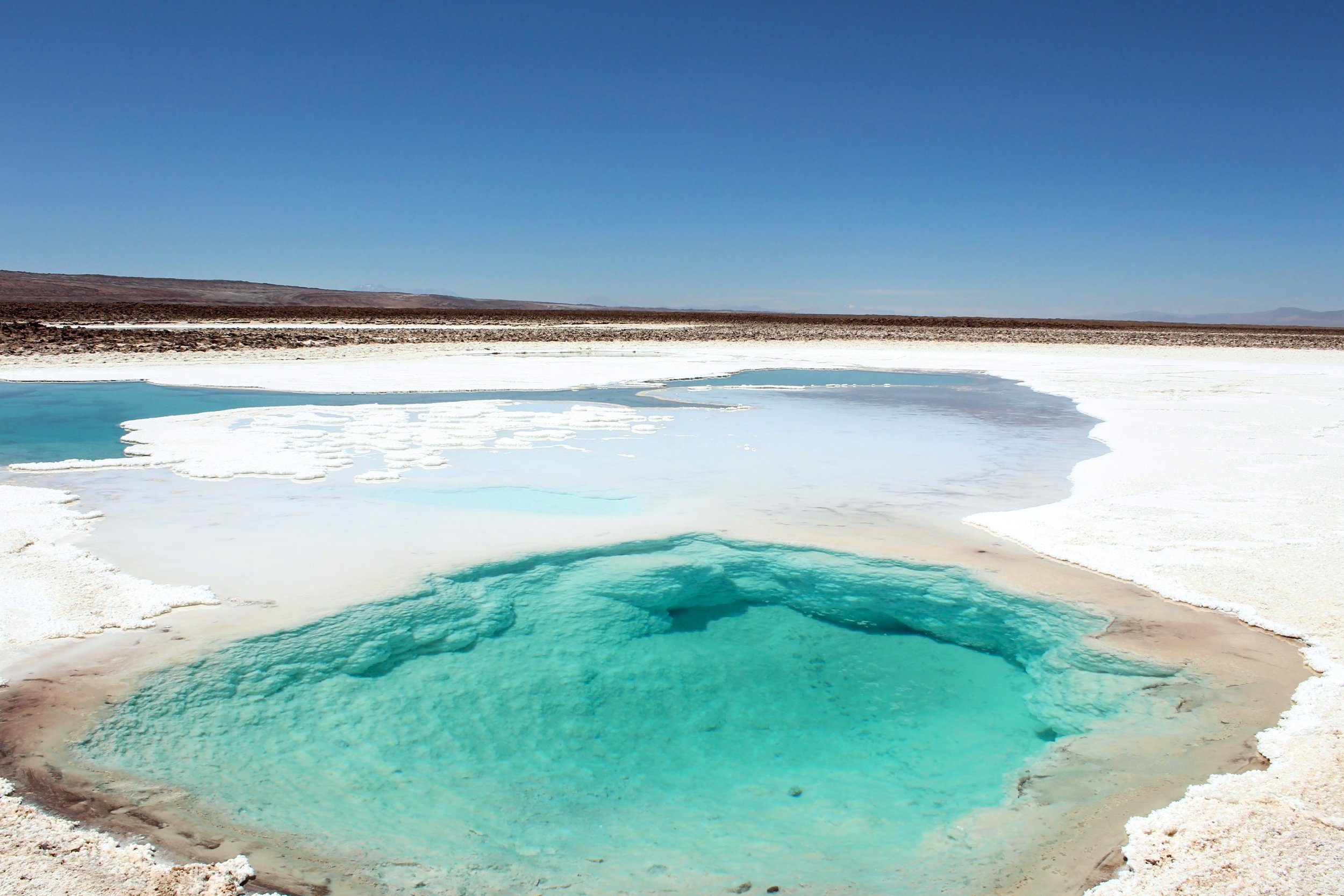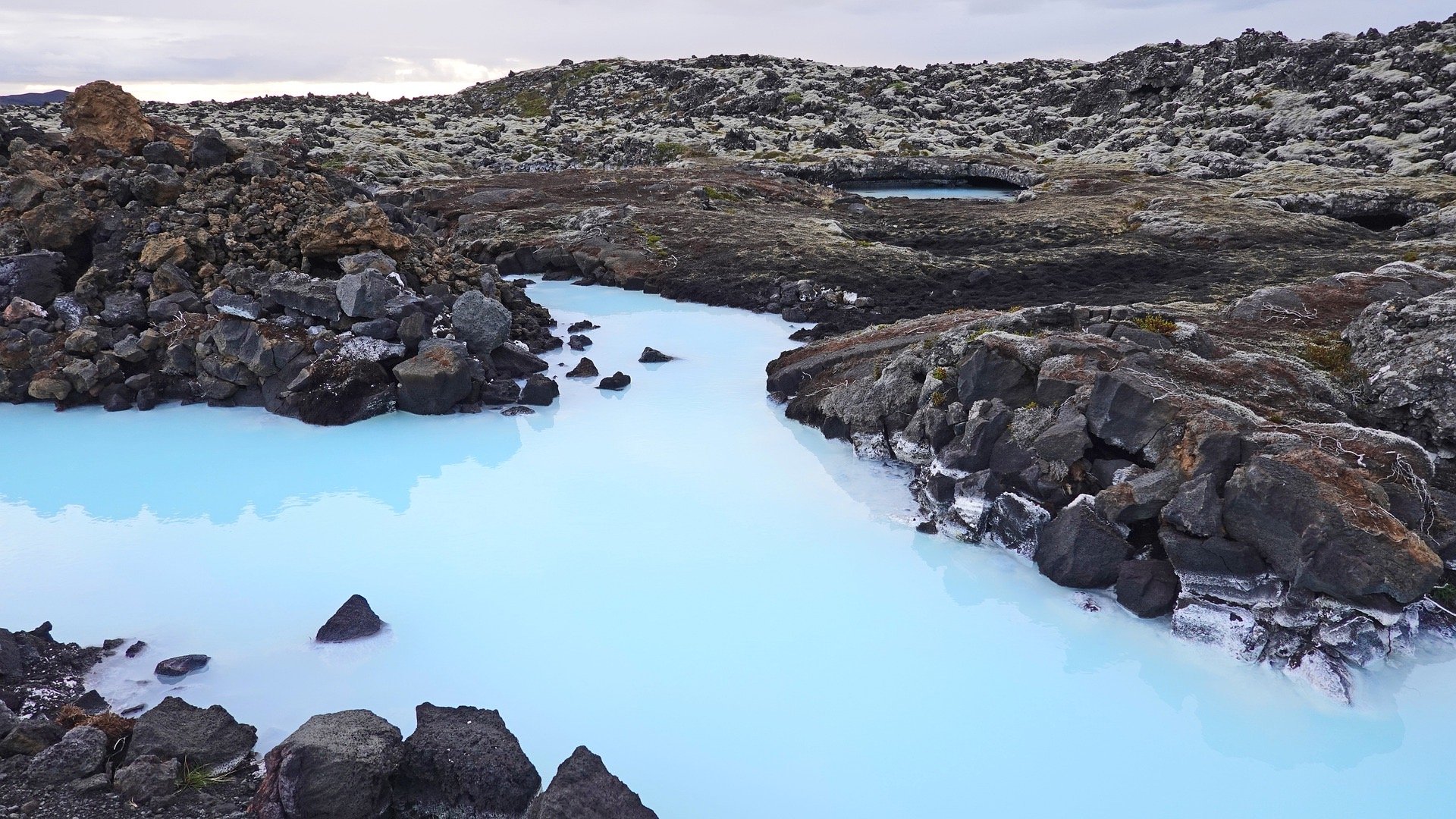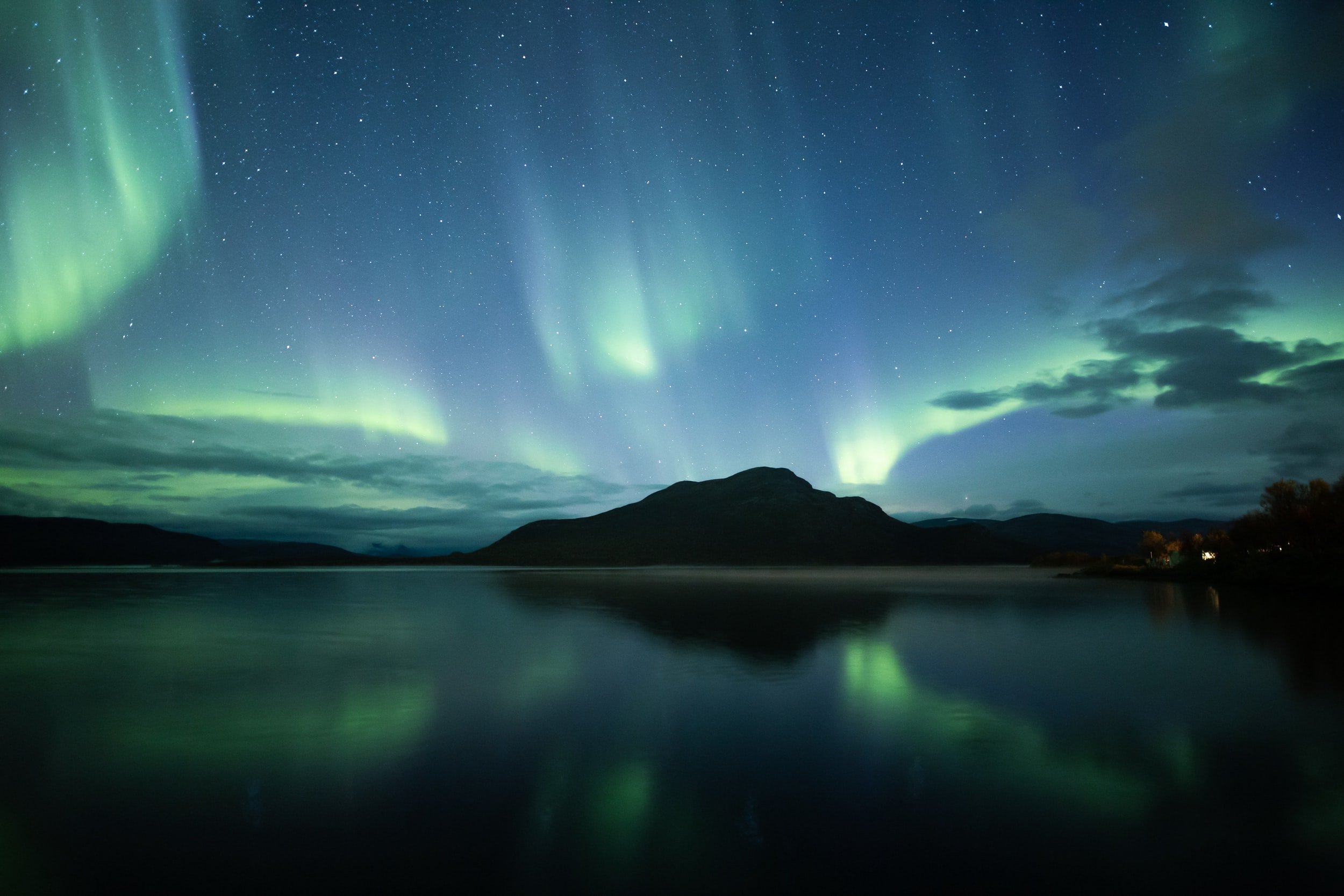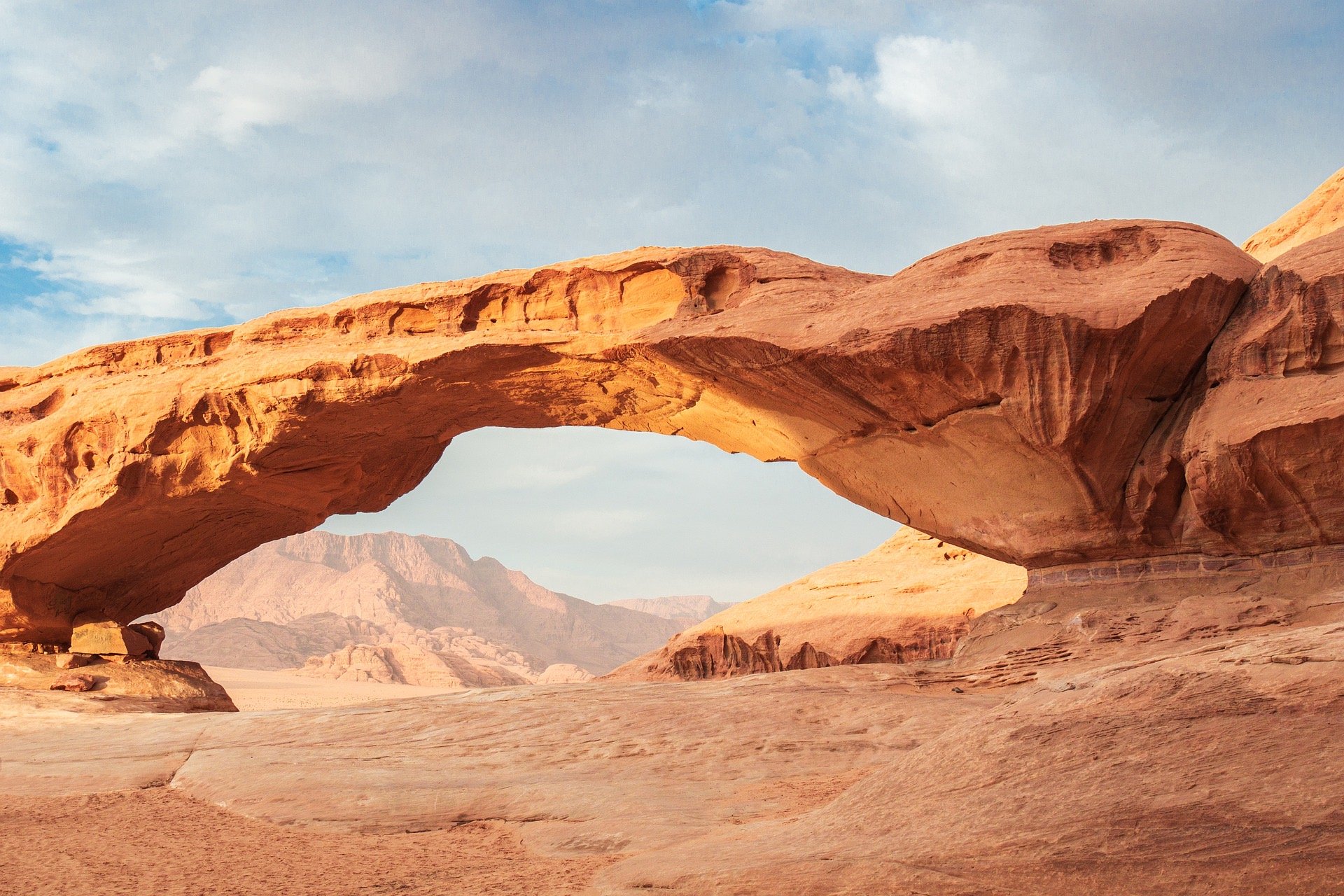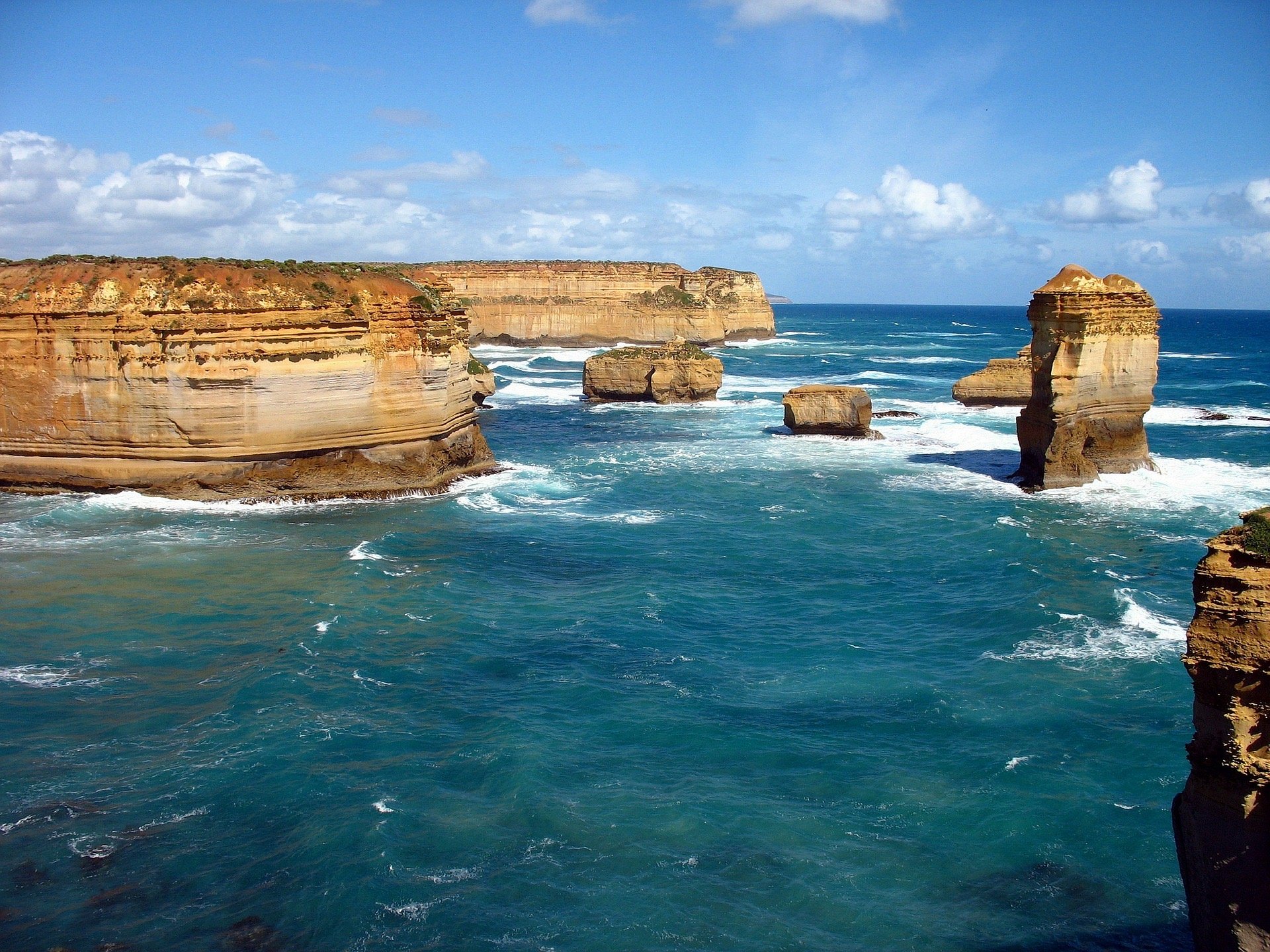Ultimate Travel Bucket List
We’ve all heard the saying ‘it’s a small world’, but in reality, the world is HUGE! There are so many choices when it comes to choosing a couple’s travel destination. There are so many different countries each with its own culture, climate, and landmarks.
Since there are so many destinations worldwide, we have curated our “Ultimate Travel Bucket List” to share with you. From romantic getaways to a weekend full of adventure, if you want to travel but have no clue where to start, this list will give you plenty of ideas for the perfect couples trip!
Banff National Park - Canada
Rocky Mountain peaks, turquoise glacial lakes, a picture-perfect mountain town and village, abundant wildlife, and scenic drives come together in Banff National Park - Canada’s first national park and the flagship of the nation’s park system.
Utah Road Trip - United States
Utah is home to some of the United States’ most popular national parks. From Bryce Canyon’s famous hoodoos to the arid desert arches, the best way to see southern Utah’s beauty is on a Utah national parks road trip. The first national park on our itinerary, Zion National Park, is 3 hours from Las Vegas and 4.5 hours from Salt Lake City. Then making our way to Bryce Canyon, Capitol Reef, Arches, and finishing in Canyonlands National Park, about 4 hours from Salt Lake City and 6.5 hours from Las Vegas.
Yellowstone National Park - United States
On March 1, 1872, Yellowstone became the first national park for all to enjoy the unique hydrothermal and geologic features. Within Yellowstone's 2.2 million acres, visitors have unparalleled opportunities to observe wildlife in an intact ecosystem, explore geothermal areas that contain about half the world’s active geysers, and view geologic wonders like the Grand Canyon of the Yellowstone River.
Grand Canyon - United States
Natural Wonder of the World
Located in Arizona, Grand Canyon National Park encompasses 277 miles (446 km) of the Colorado River and adjacent uplands. The immense Grand Canyon is a mile (1.6 km) deep, and up to 18 miles (29 km) wide. Layered bands of colorful rock reveal millions of years of geologic history with unmatched vistas from the rim.
Chichén Itzá - Mexico
Wonder of the World
This sacred site was one of the greatest Mayan centers of the Yucatán peninsula. Throughout its nearly 1,000-year history, different peoples have left their mark on the city. The Maya and Toltec vision of the world and the universe is revealed in their stone monuments and artistic works. The fusion of Mayan construction techniques with new elements from central Mexico makes Chichen-Itza one of the most important examples of the Mayan-Toltec civilization in Yucatán. Several buildings have survived, such as the Warriors’ Temple, El Castillo, and the circular observatory known as El Caracol.
Parícutin - Mexico
Natural Wonder of the World
In February 1946 the Paricutín volcano was born, located in the west of Mexico, in Michoacán. It is the youngest volcano in the world. The spectacle was witnessed by a farmer Dionisio Pulido, the only one in the world who witnessed this phenomenon, indicating that the earth gave way to fire before his eyes.
Galápagos Islands - Ecuador
Situated in the Pacific Ocean some 1,000 km from the South American continent, these 19 islands and the surrounding marine reserve have been called a unique ‘living museum and showcase of evolution’. Located at the confluence of three ocean currents, the Galápagos are a ‘melting pot’ of marine species. Ongoing seismic and volcanic activity reflects the processes that formed the islands. These processes, together with the extreme isolation of the islands, led to the development of unusual animal life – such as the land iguana, the giant tortoise and the many types of finch – that inspired Charles Darwin’s theory of evolution by natural selection following his visit in 1835.
Angel Falls - Venezuela
Angel Falls is a waterfall in Venezuela. It is the world's tallest uninterrupted waterfall, with a height of 979 metres and a plunge of 807 m. The waterfall drops over the edge of the Auyán-tepui mountain in the Canaima National Park, a UNESCO World Heritage site in the Gran Sabana region of Bolívar State.
Machu Picchu - Peru
Wonder of the World
Machu Picchu stands 2,430 m above sea-level, in the middle of a tropical mountain forest, in an extraordinarily beautiful setting. It was probably the most amazing urban creation of the Inca Empire at its height; its giant walls, terraces and ramps seem as if they have been cut naturally in the continuous rock escarpments. The natural setting, on the eastern slopes of the Andes, encompasses the upper Amazon basin with its rich diversity of flora and fauna. The easiest way to get to Machu Picchu is to take the train from Cusco to Aguas Calientes. It's a scenic 3.5-hour trip each way along tracks that run right along the Urubamba River in the Sacred Valley, with dramatic canyon walls on either side.
Salar de Pedernales - Chilé
This is a large salt flat in the Atacama Region of Chile. It is located just to the west of the Cordillera de Claudio Gay. A small lake still exists in the salt flat and provides a habitat for birds such as the Andean flamingo.
Rio de Janerio - Brazil
Rio de Janerio Harbor - Natural Wonder of the World
Christ the Reedemer - Wonder of the World
The bustling city of Rio de Janeiro has been one of Brazil’s most popular and frequented tourist destinations for decades. Its vibrant city centre is bursting with culture and pulsating with a deep sense of history and heritage. Rio, as it is commonly known, is the second largest city in Brazil and the third largest metropolis in the whole of South America. It is the most visited city in the Southern Hemisphere, which is no mean feat. This makes for an impressive, memorable attraction for visitors from all over the world.
Iguazu Falls - Argentina
The exquisite Iguazu Falls are also known as the Iguassu Falls and the Iguaçu Falls. The magnificent spectacle of these 275 individual drops has awed tourists, locals and indigenous inhabitants for centuries. They originate from the Iguazu River and are located on the border of Brazil (in the state of Paraná) and Argentina.
In fact, the Iguazu Falls are what divides the river of the same name into its upper and lower portions, a fact that has given rise to several myths and legends as to their origin. This river forms the boundary between Brazil and Argentina, making it a significant part of the political and geographical structure of the continent of South America.
Blue Lagoon - Iceland
The Blue Lagoon is one of Iceland's most popular attractions, and it's little wonder as to why. The beautiful milky-blue water is unlike anything else found on earth and starkly contrasts with the surrounding black lava fields and creeping gray moss. The temperature of the Blue Lagoon is a consistent 102 F (39 C) year-round, making it the perfect bathing temperature.
The lagoon is on the Reykjanes Peninsula in southwest Iceland, renowned for its barren landscapes and cone-shaped volcanoes. It's only a 14-mile (23-kilometer) drive from Keflavik International Airport.
Aurora borealis - Iceland/Norway
Natural Wonder of the World
The bright dancing lights of the aurora are actually collisions between electrically charged particles from the sun that enter the earth's atmosphere. The lights are seen above the magnetic poles of the northern and southern hemispheres. They are known as 'Aurora borealis' in the north and 'Aurora australis' in the south
Pulpit Rock - Norway
Preikestolen (The Pulpit Rock) towers 604 metres above the Lysefjord, and the trek there is one of Norway’s most famous mountain hikes. The nearest places to stay are Preikestolen Fjellstue and Lilland Hotell. You can also stay overnight in Stavanger, from where you can take a boat trip on the Lysefjord.
Giant’s Causeway - Ireland
The Giant's Causeway is an area of about 40,000 interlocking basalt columns, the result of an ancient volcanic fissure eruption. It is located in County Antrim on the north coast of Northern Ireland, about three miles (5 km) northeast of the town of Bushmills.
White Cliffs of Dover - England
The famous White Cliffs of Dover stand guard at the Gateway to England. Millions pass through Dover each year on their journey to or from the continent. In some places over 300 feet high, the White Cliffs are a symbol of the United Kingdom and a reassuring sight to travellers. The Cliffs have been immortalised in song, in literature and in art.
Peneda-Gerês National Park - Portugal
It is a world apart in which human activity and nature are harmoniously integrated, preserving ancient values and traditions clearly evident in the village communities of Pitões das Júnias and Tourém.
Gauja National Park - Latvia
The Gauja National Park is the largest and oldest of the national parks in Latvia, characterized by great biological diversity, variety of landforms, natural springs, sandstone outcrops, picturesque views and unique natural, cultural and historical monuments.
Matterhorn - Switzerland
At 4,478 metres, the majestic Matterhorn – certainly the most famous mountain in Europe – looms over the breathtaking Alpine panorama. This Switzerland landmark is at the border of the western Swiss canton of Valais between Zermatt and the Italian resort of Breuil-Cervinia, and offers a paradise for all nature-lovers looking for peace and quiet. Its symmetric pyramid shape, the rocky tooth reaching the sky and the light reflections of the nearby Stellisee make the Matterhorn’s landscape a unique natural spectacle in Zermatt.
Almafi Coast - Italy
The allure of the Amalfi Coast’s natural beauty has been drawing people to the region long before it had a name. Its dramatic charm and idyllic weather enticed ancient Roman nobles to build their villas there, a real estate trend that, overtime, never faded. Today the mountains and sea cliffs are dotted with pastel confections of holiday homes and sumptuous villas, which have elevated the coastline to one of the most fabulous and unique destinations in the world. Its fragile cultural landscape—churches, gardens, vineyards and towns—are divided into thirteen different municipalities, and were listed as UNESCO World Heritage sites in 1997.
Cinque Terre Italy: Monterosso, Vernazza, Corniglia, Manarola and Riomaggiore
Cinque Terre, the five towns, is a string of five old fishing villages perched high on the Italian Riviera in the region Liguria, which until recently were linked only by mule tracks and accessible only by rail or water.
Dolomites - Italy
This monumental mountain range in northeastern Italy is an idyllic playground for both outdoor adventurers and those seeking a taste of the region’s cultural heritage.
Colosseum - Italy
Wonder of the World
The Colosseum was the largest Roman amphitheater, with an elliptical structure of 188 meters long, 156 meters wide and 57 meters high. Made in brick and covered with travertine was divided into five levels with a capacity for more than 50,000 people. Even though the Roman Coliseum is now in ruins, it continues to impress us because of its great size and beauty.
Pompeii - Italy
Witness the destruction wrought by Mt. Vesuvius nearly 2,000 year ago at the archaeological site of Pompeii. The ancient village was frozen in time beneath a blanket of hot ash during an eruption in 79 C.E. Among the ruins that have been uncovered are buildings that shed light on aspects of ancient life both grand and mundane, from the temples, the coliseum and homes with fine frescoes, to public baths, chariot-rutted streets and grain stores which now hold plaster casts of the people who perished that fateful day.
Santorini - Greece
Crescent-shaped Santorini (or Thira), the precious gem of the Aegean, is actually a group of islands consisting of Thira, Thirassia, Aspronissi, Palea and Nea Kameni in the southernmost part of Cyclades.
Zakynthos - Greece
Home to the worldwide famous Navagio (Shipwreck) beach and glorified by innumerable travel guides, Zakynthos island is one of the most popular Greek islands! Breathtaking landscapes, exotic beaches with sugar-fine sand and turquoise waters and crazy nightlife are just a few reasons to visit!
Saint Basil’s Cathedral - Russia
Wonder of the World
Saint Basil's Cathedral was built between 1555 and 1561 by Ivan the Terrible in Moscow, Russia. Legend has it that the cathedral's builder was blinded post-construction so that a structure of its beauty could never be built again. Part of its distinctive appearance can be attributed to the colorful domes and vivid redbrick towers. The domes belong to nine different chapels within the cathedral, and each dome is a symbol for the assault on the city of Kazan. The design of the cathedral draws from architectural designs found in Jerusalem, and holds strong religious meanings. When seen from the top, the eight domes surrounding the ninth dome in a circular fashion appear to form a star.
Mount Everest
Natual Wonder of the World
Mount Everest is a peak in the Himalaya mountain range. It is located between Nepal and Tibet, an autonomous region of China. At 8,849 meters (29,032 feet), it is considered the tallest point on Earth. In the nineteenth century, the mountain was named after George Everest, a former Surveyor General of India. The Tibetan name is Chomolungma, which means “Mother Goddess of the World.”
Pammukale - Turkey
Pamukkale, which means “cotton castle” in Turkish, is a natural site in Denizli in southwestern Turkey. The area is famous for a carbonate mineral left by the flowing water. Over the course of thousands of years, this mineral has formed white water pools famous around the whole world for their healing properties.
Cascades d’ Ouzoud - Morocco
High in the Atlas Mountains after passing through Berber villages and beautiful scenery is the Ouzoud Falls. These tall waterfalls, which are located about 100 miles northeast of Marrakech, empty into the El-Abid River gorge. The name of the falls actually derives from the Berber culture meaning “the act of grinding grain.” Visitors can walk around the falls while enjoying the sights and sounds of the falls’ permanent residents—a troop of macaque monkeys.
Djebra &Tataouine - Tunisia
Around Tataouine and Medenine, the desert appears in all its implacable ruggedness. A vast rocky plain opens onto majestic landscapes of mountains and desert plateaus, cliffs and rocky spurs. In this Dante-esque setting can be found the astonishing architecture of the Ksour, collective fortified granaries of the Saharan nomads. These sites were filming locations during the original Star Wars Triology!
Pyramids of Giza - Egypt
Wonder of the World
All three of Giza's famed pyramids and their elaborate burial complexes were built during a frenetic period of construction, from roughly 2550 to 2490 B.C. The pyramids were built by Pharaohs Khufu, Khafre, and Menkaure. Located in Cairo, there are many hotels and other historical sites nearby.
Petra - Jordan
Wonder of the World
Inhabited since prehistoric times, this Nabataean caravan-city, situated between the Red Sea and the Dead Sea, was an important crossroads between Arabia, Egypt and Syria-Phoenicia. Petra is half-built, half-carved into the rock, and is surrounded by mountains riddled with passages and gorges. It is one of the world's most famous archaeological sites, where ancient Eastern traditions blend with Hellenistic architecture.
Wadi Rum Dessert - Jordan
This is one of the world's most beautiful deserts. More than just a sea of rolling dunes, this protected wilderness near Jordan's southern border is made unique by the dramatic sandstone and basalt mountains jutting out of its sandy floor. Named "The Valley of the Moon" for good reason, the area's natural intrigue is endless: stunning rock formations, fascinating rock art, and a brilliant night sky combine to create a unique and worthwhile destination.
Mount Kilimanjaro - Tanzania
At 5,895 meters (19,341 feet) Mount Kilimanjaro is the highest mountain in Africa and the tallest freestanding mountain in the world; it is one of the Seven Summits. The snow-capped peak of Africa is a dormant volcano and can be found inside the Kilimanjaro National Park of Tanzania.
Victoria Falls - Zambia
Natural Wonder of the World
Victoria Falls presents a spectacular sight of awe-inspiring beauty and grandeur on the Zambezi River, forming the border between Zambia and Zimbabwe. Columns of spray can be seen from miles away as, at the height of the rainy season, more than five hundred million cubic meters of water per minute plummet over the edge, over a width of nearly two kilometres, into a gorge over 100 meters below.
Ajanta caves - India
The caves at Ajanta are excavated out of a vertical cliff above the left bank of the river Waghora in the hills of Ajanta. They are thirty in number, including the unfinished ones, of which five (caves 9, 10, 19, 26 and 29) are chaityagrihas (sanctuary) and the rest, sangharamas or viharas (monastery).
Taj Mahal - India
Wonder of the World
An immense mausoleum of white marble, built in Agra between 1631 and 1648 by order of the Mughal emperor Shah Jahan in memory of his favourite wife, the Taj Mahal is the jewel of Muslim art in India and one of the universally admired masterpieces of the world's heritage.
Maldives - Indian Ocean
Discover over a thousand iridescent islands glistening amongst the indigo lagoons of the Indian Ocean. Suspended off the southern tip of India, the Maldives is the epitome of pure escapism. Here world-class luxury is set amidst white sands and the turquoise calm belies the burst of color and life of the underwater gardens below.
Sigiriya rock - Sri Lanka
This ruined, fifth-century city has some extraordinary features, including a moat and wall fortifications, elaborately landscaped gardens, and a monastery. But it is the 200-meter high granite rock that stands out from these ruins that is undoubtedly the star attraction, with its exquisite frescoes and the remains of a royal palace on the summit.
The Great Wall - China
Wonder of the World
In c. 220 B.C., under Qin Shi Huang, sections of earlier fortifications were joined together to form a united defence system against invasions from the north. Construction continued up to the Ming dynasty (1368–1644), when the Great Wall became the world's largest military structure.
Zhangjiajie National Forest - China
Zhangjiajie National Park is located in the central-eastern area of China in the Wulingyuan Scenic Area which features multiple protected areas. The national park encompasses an area of 18.59 square miles. The park is comprised of dense forests, deep ravines, deep canyons, unusual peaks, caves, and pillar-like rock formations blanketed throughout the park. These pillar rock formations are what the park is renowned for around the world. Inspiration for the floating mountains of Pandora!
Bagan - Myanmar (Burma)
More than 3,500 ancient Buddhist pagodas, temples, and other religious structures occupy approximately 16 square miles of Old Bagan within the larger Bagan Archaeological Zone. Most of the structures were built between 800 and 1,000 years ago, when Bagan was a royal capital.
Ha Long Bay - Vietnam
Halong Bay is a beautiful natural wonder in northern Vietnam near the Chinese border. The Bay is dotted with 1,600 limestone islands and islets and covers an area of over 1,500 sqkm.
Krabi - Thailand
Krabi is famous for its scenic view and breathtaking Beaches and Islands. Its coral reef vistas are also one of the world’s most beautiful, which makes the city a great spot for coral diving. With attractions including hot springs, a wildlife sanctuary, sea caves, flourishing coral reefs and exotic marine life, limestone cliffs that draw rock climbing enthusiasts from around the world, and national parks that include the island paradises of Koh Phi Phi and Koh Lanta, one could easily spend weeks in Krabi and leave yearning for more.
Miho no Matsubara - Japan
Touted as one of the “three new views of Japan,” Miho-no-Matsubara Pine Grove is a seven-kilometer stretch of coastline lined with 54,000 pine trees. Legend says an angel hung her hagoromo—a special celestial kimono—on one of the trees while she went for a swim. A local fisherman found the garment and held it for ransom, in the form of a dance.
Mount Fuji - Japan
Standing at 3,776 meters, Mt. Fuji is the tallest peak in Japan, the result of volcanic activity that began approximately 100,000 years ago. Today, Mt. Fuji and the surrounding area are a popular recreational destination for hiking, camping and relaxation.
Fiordland National Park - New Zealand
The fourteen fiords that fringe this south-west corner of the South Island were 100,000 years in the making, with the final details added during the most recent ice age just 10,000 years ago. The Maori attributed the creation of the fiords to a giant stonemason called Tute Rakiwhanoa, who hued out the steep sided valleys with his adzes. On all sides of the fiords, spectacular waterfalls tumble incessantly as the region's plentiful rainfall finds its way to the sea. At 421 metres, Doubtful Sound is the deepest of New Zealand’s fiords. It’s a haven for nature, with resident bottlenose dolphins, fur seals and penguins.
Ayers Rock - Australia
Uluru-Kata Tjuta National Park is named after two of Australia’s most spectacular sites: the world-famous sandstone monolith of Uluru and the red domes of Kata Tjuta. As well as its world-famous geological formations and extraordinary Indigenous culture, the park is home to a fascinating array of plants and animals, including many rare species.
Great Barrier Reef - Australia
Natural Wonder of the World
One of Australia’s most remarkable natural gifts, the Great Barrier Reef is blessed with the breathtaking beauty of the world’s largest coral reef. The reef contains an abundance of marine life and comprises of over 3000 individual reef systems and coral cays and literally hundreds of picturesque tropical islands with some of the worlds most beautiful sun-soaked, golden beaches.
Great Ocean Road - Australia
The spectacular Great Ocean Road hugs the seaside cliffs that snake along the wild and windswept Southern Ocean. The striking vistas along the iconic road evoke awe with craggy cliffs, empty beaches and soaring bluffs flanked by brilliant green countryside. Add epic surf, native wildlife, unforgettable hiking and biking trails and you will find plenty of things to see and do around every corner.
Wave Rock - Australia
You might not be able to to surf on it, but Australia’s lovely Wave Rock is one of the most stunning swells in the world. Made out of millennia of layers of stone, this natural formation looks as though it is actually petrified water. At almost 50 feet high and over 300 feet long, Wave Rock’s impressive size and shape have been drawing crowds for decades.

